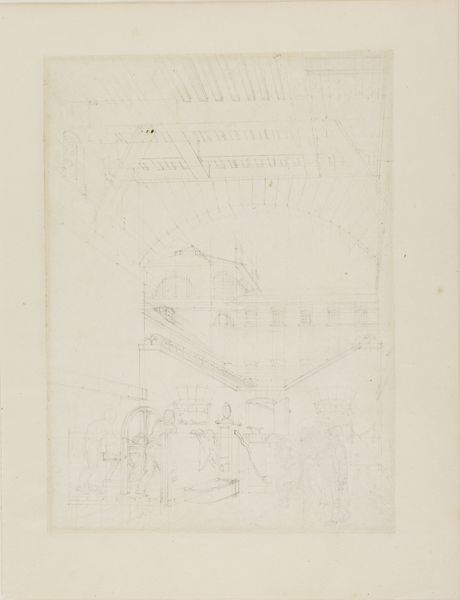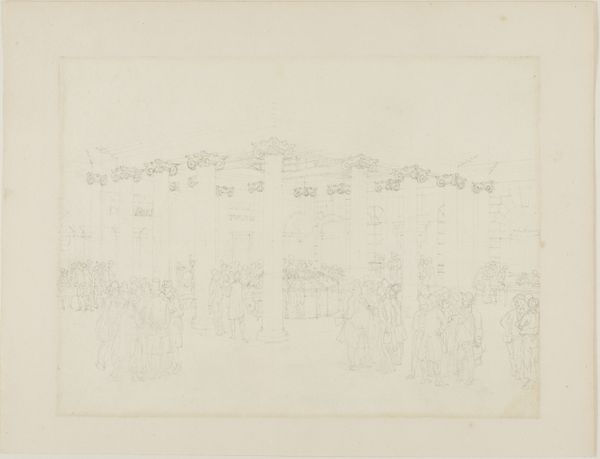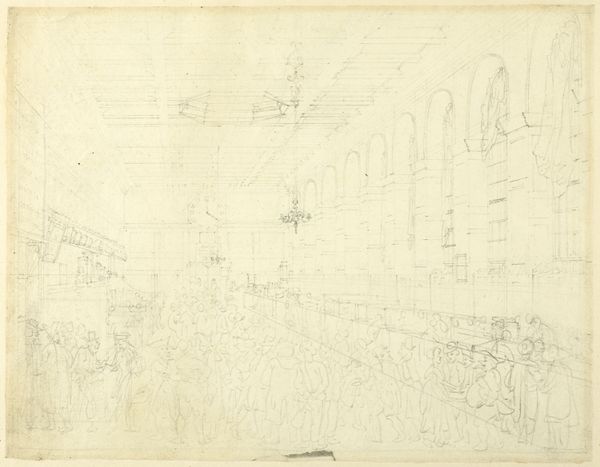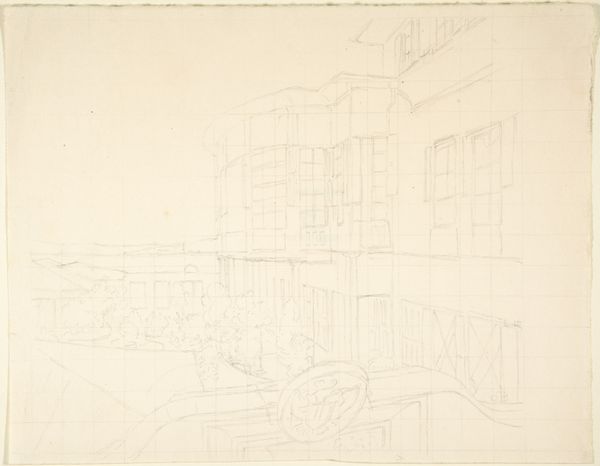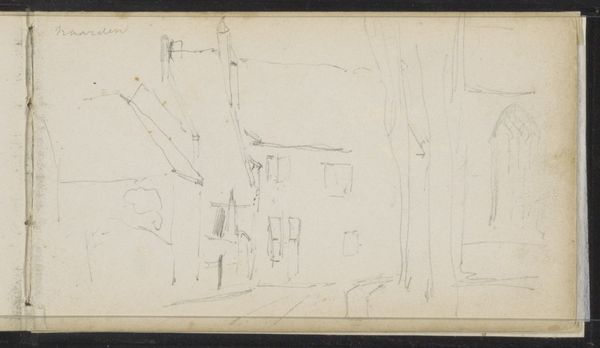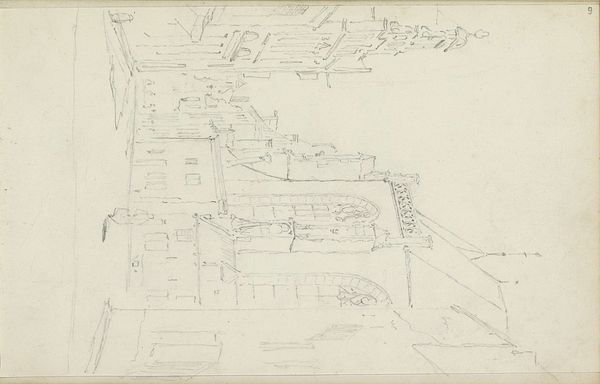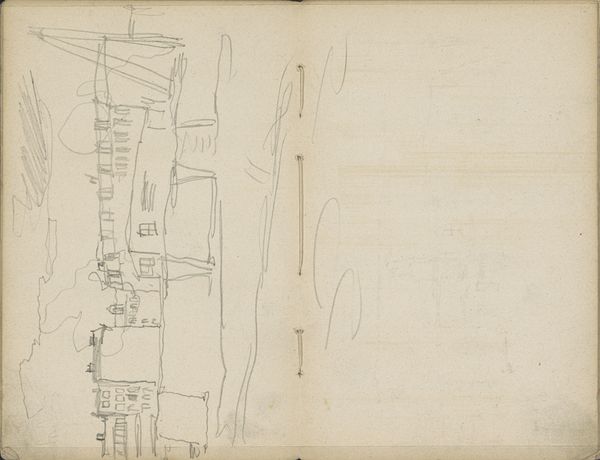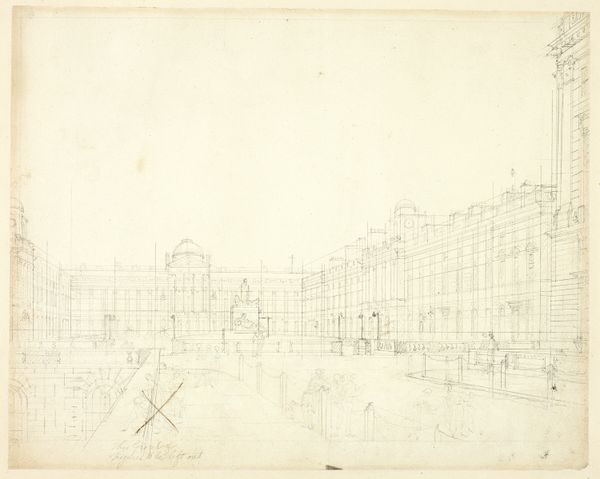
Study for Billingsgate Market, from Microcosm of London c. 1808
0:00
0:00
drawing, print, etching, paper, graphite
#
drawing
# print
#
etching
#
landscape
#
etching
#
paper
#
line
#
graphite
#
cityscape
#
realism
Dimensions: 197 × 260 mm
Copyright: Public Domain
Curator: This is a preparatory sketch by Augustus Charles Pugin, titled "Study for Billingsgate Market, from Microcosm of London," created around 1808. The Art Institute of Chicago holds it. The artwork uses graphite and etching on paper to render the detailed urban scene. Editor: It’s a whisper of a city, isn't it? So faint, like a memory almost lost. I feel the market, even though the lines are so delicate. Curator: Pugin made this drawing as preliminary study for a print in "Microcosm of London," a visual project intending to capture the city’s architectural landmarks and quotidian public life. This shows his working process—laying out composition and architectural details. Editor: You know, it’s amazing how much information is conveyed with so little. The artist is essentially constructing this bustling marketplace with mere hints— suggesting energy and atmosphere with just a few carefully placed lines. You can almost hear the fishmongers. Curator: Yes, the printmaking techniques are very intentional, etching and graphite provide details of the architecture. The architecture in contrast with the people indicates social hierarchy and structure, where one cannot live without the other. The study and final etching are artifacts of the period that also reflect larger issues of urbanization, commerce, and labor practices that historians can study further. Editor: It's interesting you mention hierarchy, I see a sense of…communal chaos. These little lines all squished together in the foreground forming this, well, democratic mob! And beyond, that serious facade looking down on it all. I guess Pugin is playing with tension—restraint versus frenzy? Curator: Exactly! And remember, the "Microcosm" project itself was driven by an intention: to define London through its buildings and people as a symbol of British progress and civilization, where Billingsgate serves as one crucial scene. Editor: So, in essence, a sales pitch, framed in line and shadow. Despite being just a study it feels so vibrant and lived-in— more compelling than any perfectly finished piece, to me at least. Curator: I agree. This study allows us to see the layers, both literal and figurative, of how urban life was perceived and represented in visual culture at the beginning of the 19th century. Editor: It certainly does give one pause. Curator: And provides great insight to London’s bustling economy in the early 1800s.
Comments
No comments
Be the first to comment and join the conversation on the ultimate creative platform.

